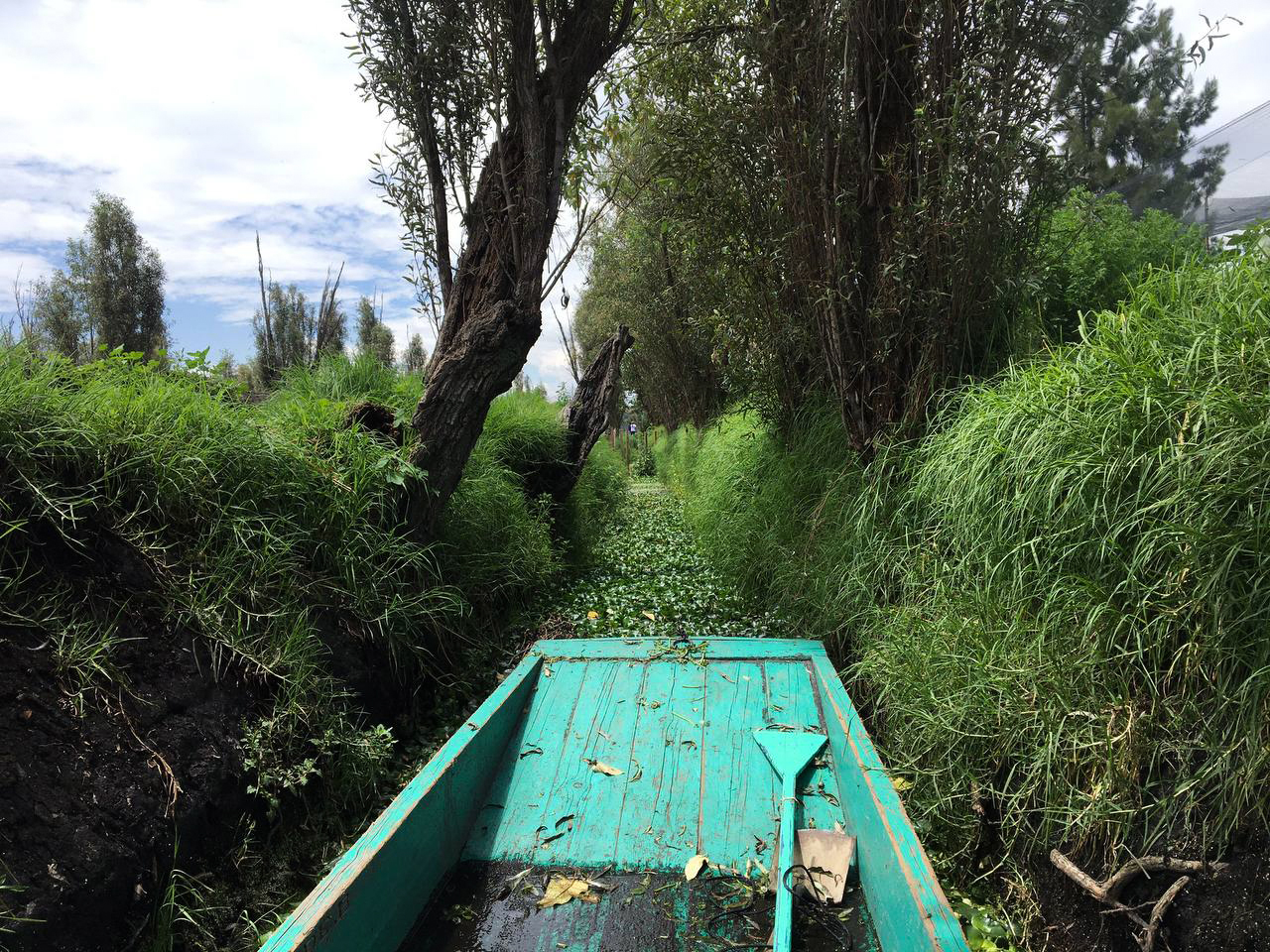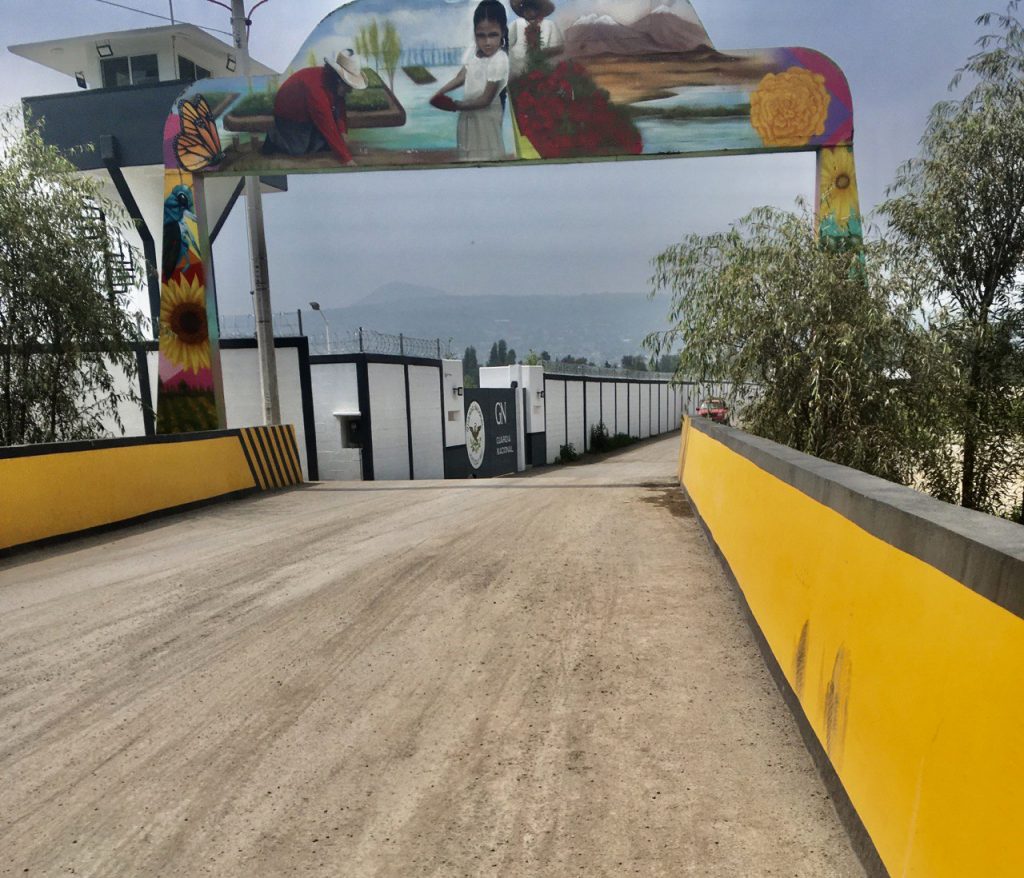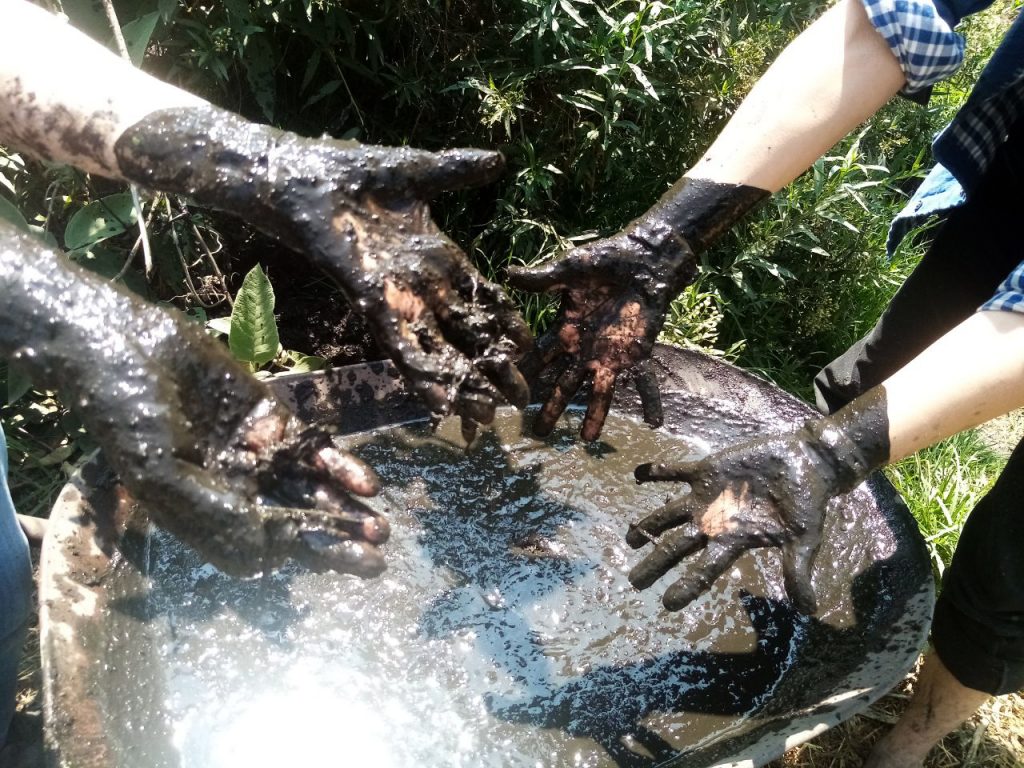The Return of the Herons
by: Tona Kinich
Climate Justice, Local knowledge, México
Translated by Lola Malavasi
There is silence.
Before, there were whistles, singing, wings, and feathers.
Progress, development, and the State’s security impose themselves.
A destructively visible presence
in a dust cloud that strikes our faces.
Overhead, loud propellers spell dispossession.
The southern part of Mexico City has several areas where crops grow. Xochimilco is one of them. Here, fighting to preserve traditions and ways of organizing is a constant act of resistance. Within this territory, there is an ongoing confrontation against dispossession. Xochimilco is one of the peripheries that sustain the city center, nourish it, pump water to it, and serve as a tourist attraction.
Before, this was all a lake. So, people planted agricultural fields on it, the chinampas.1
The helicopters will keep going by all afternoon. By nightfall, they will become truck engines and the trembling that comes from their advance. The blinding lights and the constant marks of their tires signal their repetitive passing.
A chinampa resembles a small island, a series of dirt mounds connected by water canals. Some have said that this landscape dedicated to agroecology creates a balance of water-earth-wind. This allows it to be fertile for farming and filled with nutrients. It creates a moist layer underneath the rhizosphere and has water available for the plants.

This silence speaks of the exodus, the annihilation.
There are no birds nearby. They were scared away.
There is rage, fear, sadness.
I grew up at the border between the farming area and the working class colonias of the city. I distanced myself from the vegetation by relating to the urban areas of the city through my parents’ work, the schools I attended, recreational areas, jobs, and spaces for organizing. I have normalized traveling for at least an hour and a half.
Working on the chinampa was an invitation to re-territorialize a space that had lost its familiarity. Sari invited me to tour the area, join the tequios, be part of the planting and harvesting, pay attention to the agricultural cycles, and rescue and safekeep native seeds like the chicuarote, cempasúchil, corn, and beans. These activities make up most of what we do as a project to reconnect with the chinampa.
Those who have taught me how to farm have mainly been women
In the chinampero territory, the work with the earth is preferably done barefoot.
While the helicopters show themselves and the birds hide, we find ourselves cleaning and weeding the grass to plant tomatoes.
Is it possible to relate to the earth in a more caring way instead of dominating it?
Chinampa, from the náhuatl “chinamitl” (weave of branches) and “pan” (on top of everything).
The territory changes: there were great extensions of lakes and then canals. The land begins to encompass more space. Now comes the concrete.
I bike from my house to the chinampas. The city transforms. It goes from gray to green, water canals instead of large avenues.
At one of the entrances near the space where we work, construction recently began on barracks for the National Guard, the Mexican government’s security institution. It contrasts with the landscape. It is heavy, big, completely made of concrete, a spatial representation of imposition. Underneath, there are layers of mud on top of water basins, just like in the rest of the area.
Miguel includes us in his relationship with the earth. He invites us to be part of his experience growing up.
Sari pushes and encourages us.

At that moment, the three of us learn from the water, the mud, the chicuarote chili,2, the corn, the fennels, the purslane, and the quelites.3
We become chinamitl.
San Gregorio Atlapulco, Xochimilco, where the chinampera zone in which we collaborate is located, is a territory that supplies water to the center of Mexico City. It is drained.
In seasons without rain, there is no water to irrigate. There is not enough in the face of the plants’ thirst and the intense heat.
Atlapulco: “where water flutters” or “the mud’s lands.”

I like to feel the mud, immerse myself in it.
My body absorbs its temperature, I leave in it a mark.
Mud recognizes relationships and interactions, it bears witness to them.
What marks do I leave on the territory?
* * *
Last year we navigated the Yuma River on salvaged tires.4 The Jaguos por el Territorio included us in their relationship with the space they inhabit and its defense. With them, I learned to pay attention to the birds and that defending the territory is related to the interactions that we generate with it.
I find myself staring at a bright sky and a path of tree ridges. I feel the refreshing cold of the water all over my body. I tremble even though I feel relaxed lying on the tire. The current carries us. Soon, I hear a waterfall, but I cannot locate where the sound is coming from.
“How about that waterfall?”
Camilo, who is about 12 or 13 years old, approaches and guides me to the origin of the sound with his gaze. A large flow of brown water.
“That’s all irrigation from the crops. All the fertilizer goes into the river,” he tells me.
* * *
Three corn seeds are left in the milpa: one for the birds, one for the earth, and one for humans. We do not focus on producing. We do not use agrochemicals. I get the feeling that care and learning are beginning to take up more space in my relationship with the territory. We work the land not to make it productive, but to care for and get to know it. Listening to Itziar makes me realize this when she tells us that in the Albura collective they see themselves as beekeepers, rather than honey producers in the semi-desert of Querétaro.5
How can a project be financially sustainable without focusing on production?
In the chinampas there are crop areas and tourist areas. It bothers me to feel like a tourist, but many times I perceive myself as one. I would like to maintain a daily presence in the crop, a presence that becomes a defense. Defending implies confronting injustice. It is justice that comes from care and community organization.
* * *
Men are the ones that primarily work the land in the chinampas. But those who have taught me to farm have mainly been women. With those with whom I share learning about the land, I feel connected in how to sow, water, and observe. It becomes an expression of endearment.
in the struggle of the Wixárica community and their unheard demand for the restitution of their lands; in the so-called “Maya Train” and its path of violence.
Many times justice is a feeling,
it appears by making me realize the flight of the herons in the face of progress and also when they return despite it,
or maybe,
in front of it.